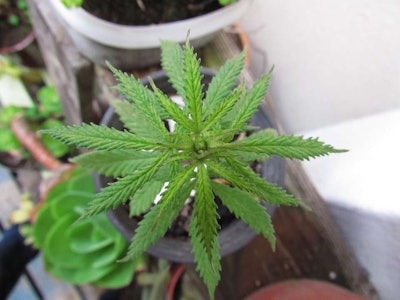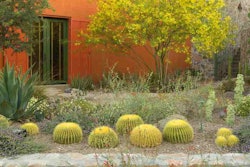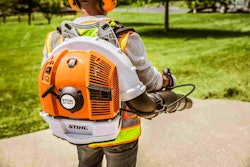 Photo: Pixabay
Photo: PixabayWhen you hear “green industry,” you probably think of the current field that you are in and all that pertains to it, but the phrase can also refer to the booming interest in growing marijuana as more states legalize its medicinal and/or recreational use.
While most individuals are happy to go to a marijuana dispensary to get a pick-me-up of pot, there are those who would like to grow their own.
Full disclaimer, marijuana is still considered illegal to both grow and possess in the eyes of the federal government. However, currently there are 29 states that allow the use of medical marijuana and eight that permit recreational weed. The federal government says that if states pass laws to decriminalize cannabis, it can do so as long as there are regulation systems in place.
Each state has its own limitations and conditions as to how much one can possess and whether home cultivation is allowed. Click here to see a map of marijuana legalization.
Even in the states where home cultivation is allowed, individuals are restricted to a certain number of cannabis plants they may grow. Click here to see the possession limits for states. Those interested in growing marijuana in states that allow it should also check with their local government to see if there are additional restrictions.
“Since backyard cannabis cultivation is still quite new, many local governments have not yet adopted an official policy and there is opportunity for well-informed gardeners to help educate their local officials and promote more open, neighborhood-oriented approaches to incorporating cannabis into local gardens and greenhouses,” Cassia Furman, a managing attorney at the national cannabis law firm Vicente Sederberg, told Sunset.
Basic care
Like any other plant, cannabis thrives in certain growing conditions. While it doesn’t have specific USDA Hardiness Zones listed, for obvious reasons, it can handle temperatures up to 86 degrees Fahrenheit and down to 55 degrees Fahrenheit, according to Leafly.com.
Cannabis prefers full sun and well-drained, slightly acidic soil. The plant’s roots are susceptible to fungal diseases in poorly drained soils. Cannabis is vulnerable to high winds and rains can cause mold and mildew problems. In rainy climates, advise homeowners to select a variety with a resistance to mold.
When it comes to selecting which strains to use in the landscape, this depends on what characteristics the homeowner is wanting, but there are some strains that are more suited for certain climates over others.
Also, when using cannabis clones, keep in mind these do not develop a taproot and tend to be less vigorous than seeds. On the other hand, seeds can tolerate low temperatures and wet conditions but each is unique, unlike the clones, making the final product a bit of a mystery.
Landscape options
There are multiple ways that you can incorporate marijuana into your customer’s “ganja garden” where it doesn’t stand out as an intruder.
You wouldn’t think a plant that has the nicknames “stinkweed” and “skunk” would be an ideal plant to a scent garden, but there is a considerable variety of cannabis strains that have scents that can range from citrusy to pine-like. It can be paired with other fragrant plants like lavender and salvia.
Because most states limit home growing of marijuana to six plants, growing cannabis in containers can help keep it under control. It can be added among a client’s other containers with ease and certain varieties can produce showy flowers called colas in the summer and fall.
If your customer has a kitchen garden, this additional ‘herb’ can easily be incorporated alongside tomatoes or squash. With the rich soil of a raised bed it will thrive, but it should be planted far away from delicate herbs or vegetables that could be overwhelmed by the cannabis.
With serrated leaves similar to those of a Japanese maple, cannabis can provide interesting texture and color to a landscape as well. If incorporated correctly, it can serve as a backdrop in mixed beds.
A word of caution you should pass on your customers is that because of the properties of cannabis, there will be some who may want to harvest it for their own needs, so proper precautions should be taken so as not to draw attention to the plant and ensure it is unobtainable to outsiders.











